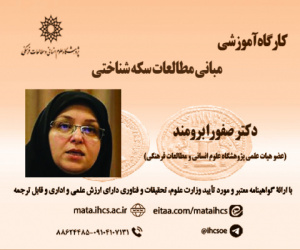بررسی اثرات، مزایا و معایب کشت گلخانه ای در مناطق روستایی، مطالعه موردی: شهرستان مبارکه (مقاله علمی وزارت علوم)
درجه علمی: نشریه علمی (وزارت علوم)
آرشیو
چکیده
ارزیابی بخش کشاورزی در مناطق روستایی نشان می دهد که کشت گلخانه ای در حال گسترش است و این توسعه، مسلماً پیامدها و اثرات متنوعی به دنبال دارد. شهرستان مبارکه در استان اصفهان، از مناطق بارزی است که روستاهای آن، به کشت گلخانه ای روی آورده اند. با توجه به فراگیرشدن این نوع کشت و کشت وسیع در این منطقه، هدف پژوهش حاضر بررسی توسعه کشت گلخانه ای و اثرات آن بر مناطق روستایی منطقه است. روش تحقیق، توصیفی-تحلیلی و مبتنی بر داده های پیمایشی از طریق پرسش نامه می باشد. جامعه آماری پژوهش را بهره برداران کشت گلخانه ای به تعداد 1927 بهره بردار تشکیل داده اند. بر اساس فرمول کوکران حجم نمونه برای گروه بهره برداران برابر با 322 نفر محاسبه شد. روایی پرسش نامه از طریق نخبگان تأیید و پایای آن نیز با ضریب کرونباخ بیشتر از 70/0 تأیید شد. تجزیه وتحلیل داده ها در نرم افزارهای «spss» انجام شد. نتایج آزمون نشان داد کشت گلخانه ای در سطح معناداری کمتر از 05/0، اثرات اقتصادی و اجتماعی متنوعی در مناطق روستایی داشته که بر اساس میانگین آزمون، مهمترین تأثیر اقتصادی و اجتماعی کشت گلخانه ای به ترتیب، افزایش تولید با میانگین 947/4 و کنترل و مدیریت منابع آب با میانگین 388/4 بوده است. همچنین نتیجه آزمون نشان داد که مهمترین مزیت کشت گلخانه ای، تولید بیش از یک محصول در سال با میانگین 779/4 و مهمترین مشکل کشت گلخانه ای، هزینه زیاد اولیه(به ویژه برای احداث) با میانگین 680/4 می باشد.Investigating the Effects, Advantages and Disadvantages of Greenhouse Cultivation in Rural Areas (Case study: Mobarakeh county)
The assessment of the agricultural sector in rural areas indicates that greenhouse cultivation is expanding, and this development certainly has various consequences and effects. Mobarakeh county in Isfahan province is one of the prominent areas whose villages have turned to greenhouse cultivation. Considering the spread of this type of cultivation, the aim of the current research is to investigate the development of greenhouse cultivation and its effects on rural development in this region. The research method is descriptive-analytical, based on survey data collected through a questionnaire. The statistical population of the research comprises 1927 greenhouse cultivation operators. Based on Cochran's formula, the sample size for the user group was calculated as 322 people. The validity of the questionnaire was confirmed by experts, and the reliability was also confirmed with a Cronbach's coefficient of more than 0.70. Data analysis was conducted using SPSS software. The results indicated that greenhouse cultivation, at a significance level of less than 0.05, has had various economic and social effects in rural areas. The most important economic and social impacts of greenhouse cultivation were, respectively, an increase in production with an average score of 4.947, and the control and management of water resources with an average score of 4.388. Additionally, the test results showed that the most significant advantage of greenhouse cultivation is the production of more than one crop per year with an average score of 4.779, while the most significant problem is the high initial cost (especially for construction) with an average score of 4.680.







